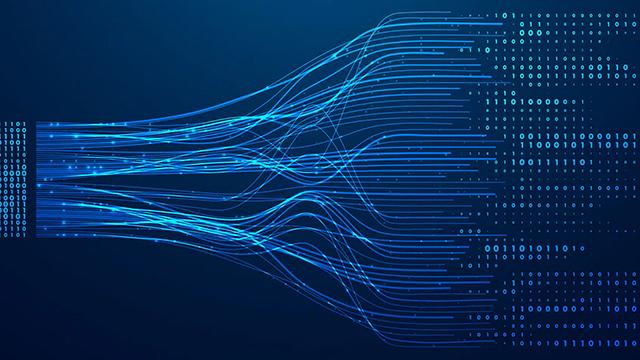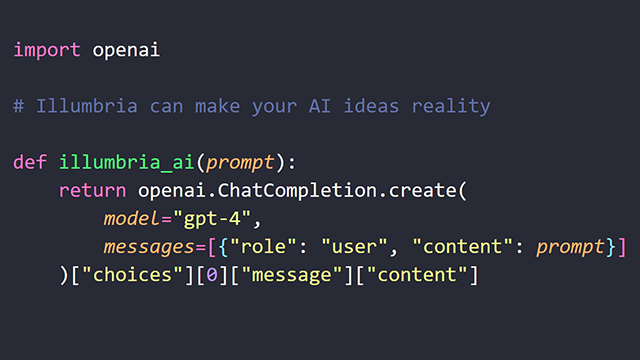5 Ways LLMs Are Transforming Industries in 2025
Large Language Models (LLMs) have emerged as one of the most transformative AI technologies of our time. As we progress through 2025, these sophisticated models are rapidly reshaping industries across the economic landscape, driving innovation and creating new paradigms for how businesses operate.
In this article, we examine five key sectors where LLMs are making the most significant impact, providing real-world examples and strategic insights for business leaders.
1. Healthcare: Precision Medicine and Clinical Support
Healthcare organizations are leveraging LLMs to revolutionize patient care and medical research through advanced language understanding and generation capabilities.
Key Transformations:
-
Clinical Decision Support: LLMs analyze patient records, medical literature, and treatment guidelines in real-time to provide physicians with evidence-based recommendations, reducing diagnostic errors by up to 32% in early adopter hospitals.
-
Drug Discovery Acceleration: Pharmaceutical researchers are using LLMs to analyze scientific literature, predict protein interactions, and identify promising compounds, reducing early-stage drug discovery timelines by up to 60%.
Case Study: Memorial Health Network
Memorial Health implemented an LLM-based clinical support system that analyzes patient records, lab results, and medical literature to provide real-time recommendations to physicians. In the first year of deployment, they documented a 28% reduction in diagnostic errors and a 17% decrease in unnecessary testing.
- Personalized Treatment Plans: By analyzing individual patient data against vast medical knowledge bases, LLMs help physicians develop highly personalized treatment plans that account for unique genetic factors, medical history, and lifestyle variables.
2. Financial Services: Risk Management and Personalization
The financial sector has been an early and enthusiastic adopter of LLM technology, finding particular value in its ability to process and derive insights from enormous volumes of textual financial data.
Key Transformations:
-
Advanced Risk Assessment: LLMs analyze news feeds, regulatory filings, social media, and market reports to identify emerging risks before they impact portfolios. Financial institutions report 22-40% improvements in early risk detection.
-
Hyper-Personalized Banking: Financial institutions use LLMs to understand customer needs at a granular level, enabling them to offer highly tailored financial products and advice. Early adopters report 35% increases in product adoption rates.
-
Fraud Detection: By identifying subtle patterns across vast datasets, LLMs have improved fraud detection accuracy by 52% while reducing false positives by 38% for leading financial institutions.
| Application | Performance Improvement | Business Impact | |-------------|-------------------------|-----------------| | Risk Assessment | 40% earlier detection | $14.2M avg. risk mitigation | | Customer Personalization | 35% product adoption | 28% increase in customer LTV | | Fraud Detection | 52% improved accuracy | 41% reduction in fraud losses |
3. Marketing and Customer Experience: Understanding and Engagement
Marketing has been transformed by LLMs' ability to understand customer intent, generate personalized content, and engage in human-like conversations at scale.
Key Transformations:
-
Content Creation and Optimization: LLMs generate marketing copy, product descriptions, and social media content tailored to specific audience segments, increasing engagement rates by 47% on average.
-
Customer Service Automation: Advanced conversational AI powered by LLMs can handle up to 85% of customer inquiries without human intervention, while maintaining or improving customer satisfaction scores.
-
Market Intelligence: LLMs analyze consumer sentiment across social media, reviews, and forums to identify emerging trends and opportunities, giving brands a 4-6 month advantage in responding to market shifts.
Innovation Spotlight: Conversational Commerce
In 2025, we've seen the rise of fully conversational shopping experiences powered by LLMs. These systems understand nuanced product questions, make contextually relevant recommendations, and guide customers through complex purchase decisions—all while maintaining a natural conversation flow that approaches human-quality interaction.
4. Manufacturing: Process Optimization and Knowledge Management
Manufacturing has found unexpected value in LLMs by applying them to technical documentation, maintenance records, and operational data analysis.
Key Transformations:
-
Knowledge Capture and Transfer: LLMs help preserve and transfer institutional knowledge by ingesting decades of engineering documents, maintenance logs, and tribal knowledge, making expertise accessible across the organization.
-
Predictive Maintenance: By analyzing maintenance records, sensor data, and equipment documentation, LLMs help predict equipment failures with 63% higher accuracy than previous-generation systems.
-
Supply Chain Optimization: LLMs analyze global news, weather patterns, logistics data, and supplier information to predict disruptions and automatically suggest mitigation strategies.
The financial impact has been substantial:
Average Outcomes for Fortune 500 Manufacturers:
- 37% reduction in unplanned downtime
- 22% decrease in maintenance costs
- 19% improvement in overall equipment effectiveness (OEE)
- $27.4M annual savings for the average implementation
5. Legal Services: Research, Analysis, and Document Generation
The legal industry, traditionally resistant to technological change, has seen rapid adoption of LLM technology as firms recognize the competitive advantage it provides.
Key Transformations:
-
Legal Research Acceleration: LLMs can analyze thousands of cases, statutes, and legal opinions in minutes, identifying relevant precedents and arguments that might otherwise take days or weeks to discover.
-
Contract Analysis: Law firms and corporate legal departments use LLMs to review contracts for risks, non-standard terms, and compliance issues with 94% accuracy while reducing review time by 78%.
-
Document Generation and Review: LLMs draft legal documents, pleadings, and correspondence based on minimal input, reducing document preparation time by 65% and allowing attorneys to focus on strategic work.
Emerging Trend: Regulatory Compliance Monitoring
A growing application for LLMs in legal services is continuous regulatory compliance monitoring. These systems track regulatory changes across jurisdictions, analyze their impact on specific organizations, and generate compliance recommendations—all without human intervention until final review.
The Future: Multi-Modal LLMs and Cross-Industry Integration
As we look beyond 2025, the next frontier for LLMs is multi-modal integration—combining language understanding with vision, audio, and structured data analysis capabilities.
Early experiments with these systems show promise for:
- Healthcare: Real-time analysis of medical imaging combined with patient history and medical literature
- Manufacturing: Visual inspection combined with technical documentation analysis
- Financial Services: Integration of market visuals, news sentiment, and numerical data for investment insights
Implementation Considerations
Organizations looking to leverage LLMs should consider several critical factors:
-
Data Quality and Governance: LLMs require high-quality, well-governed data to deliver reliable results.
-
Domain Specialization: General-purpose LLMs should be fine-tuned on industry-specific data for optimal performance.
-
Human-AI Collaboration Model: Define clear roles and interfaces between LLM systems and human experts.
-
Ethical Guidelines: Establish clear guidelines for responsible AI use, including fairness, transparency, and privacy considerations.
Conclusion
The transformative impact of LLMs across industries has exceeded even the most optimistic predictions from just a few years ago. Organizations that have successfully implemented these technologies are seeing substantial competitive advantages in efficiency, innovation capacity, and customer experience.
As these technologies continue to evolve, the gap between early adopters and laggards is likely to widen. Forward-thinking organizations should begin exploring LLM applications now, starting with targeted use cases that can deliver clear, measurable value while building the organizational capabilities needed for broader deployment.


